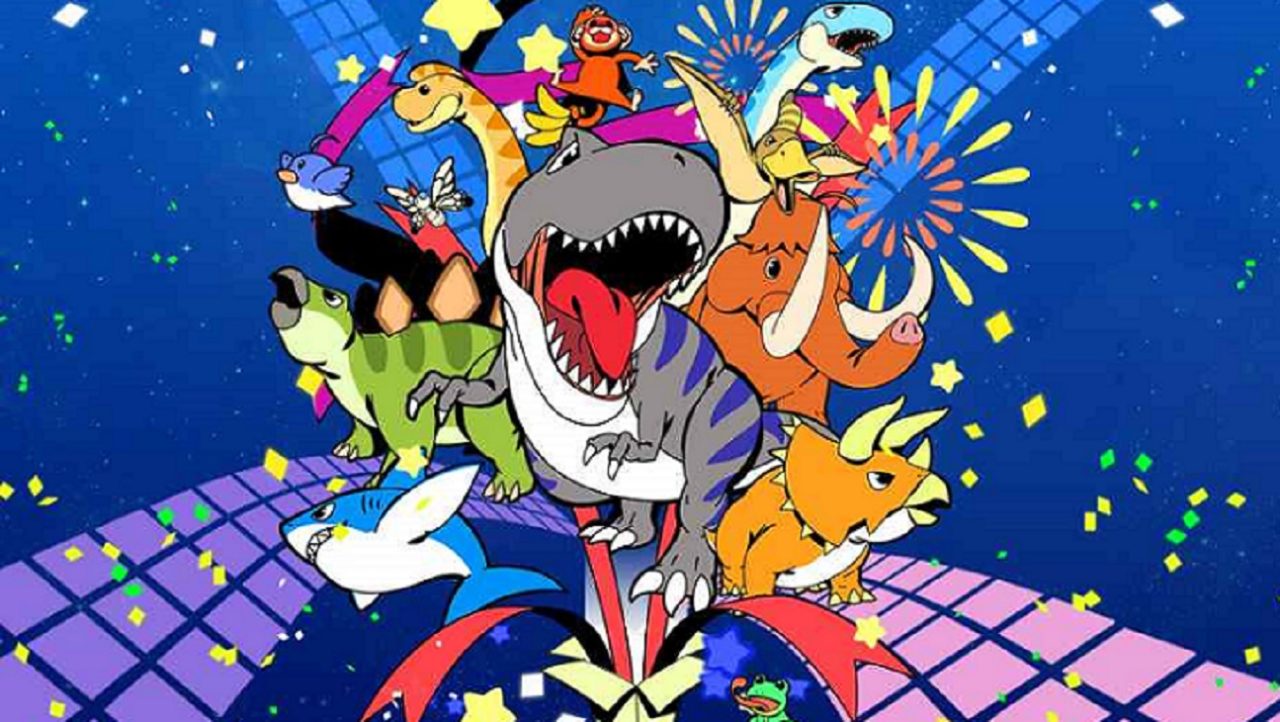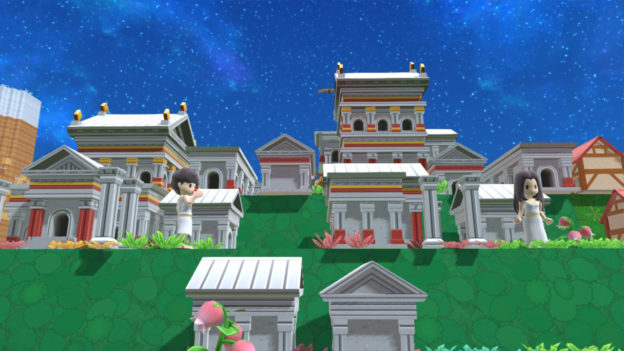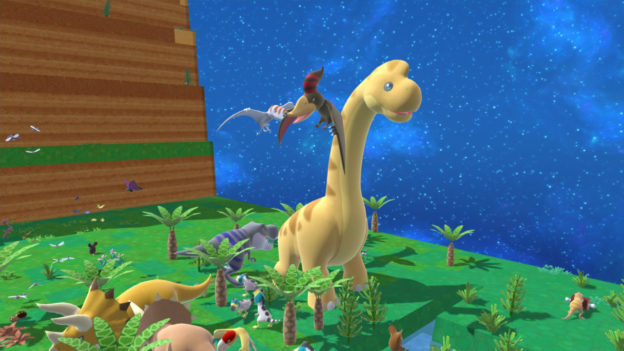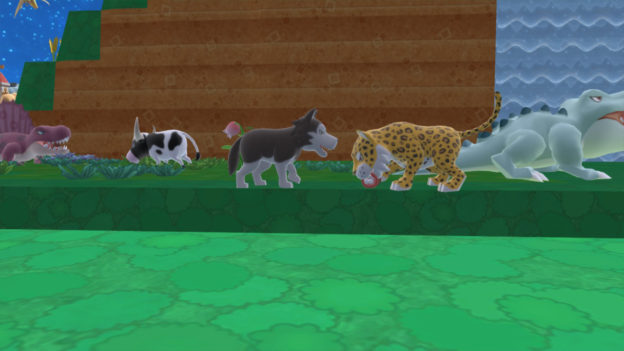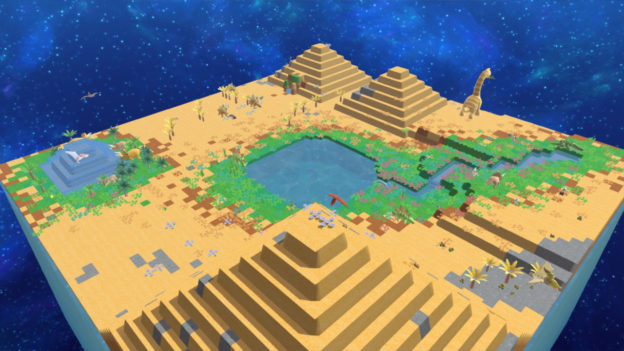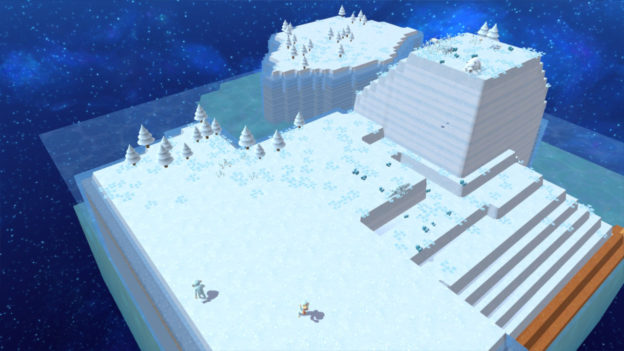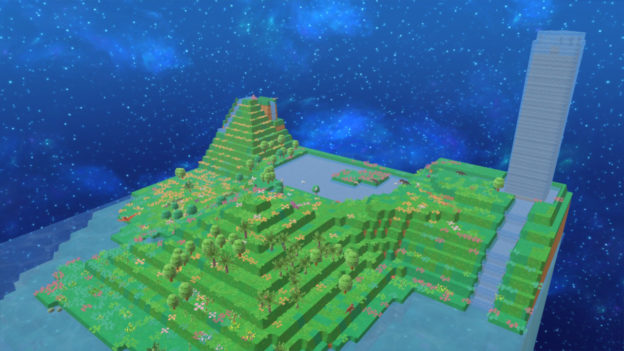Happy Birthdays is not the game that its name and cover art suggest that it is. The cartoon dinosaurs hint at a kid-friendly Jurassic Park sort of thing and the title Happy Birthdays just makes it seem more cutesy still.
But it’s a far more interesting and less cartoony game than you might imagine after a quick first impression.
It describes itself as a ‘sandbox’ game, which is a description it does fit in a broad sense, but it’s not even close to comparable to some of the most popular sandbox games, like Fortnight or Minecraft.
Happy Birthdays puts you in total control of cube-shaped worlds that you can manipulate to shape the course of the evolution of those worlds. You are taught the ropes by an adorable sprite called Navi who teaches you how to change the geography of the world, raising mountains, levelling plains and deepening oceans to encourage new life forms to develop and flourish in your space.
You start off with a simple green cube world with lots of water and lush natural areas with abundant plant life. At first, the new species you discover are as simple as an offshoot breed of tree. Eventually, they develop through reptiles and lizards until you get your first mammal and finally you start to get creatures that are recognisable as ancestors of the creatures that populate the Earth today.
In fact, the first major goal of the game is to establish the ideal conditions for homo sapiens to evolve.
As you get further through the game, there are more goals to achieve and different types of worlds to build on, including desert worlds and ice worlds. You can adjust and tweak your worlds to fill in an enormous evolutionary map. You can also take part in specific challenges, in which you jump into an existing world and have to alter it so that a particular creature will be able to evolve.
Happy Birthdays is a game that requires a lot of patience, but is designed in such a way that doesn’t make it boring.
It’s easy to understand, but the level of nuance you can delve into in order to create the worlds the way you want to makes it fairly complex to master. You can spend hours making tiny tweaks in an attempt to get the new plant or creature you’re looking to develop. There are lots of statistics and measurements to take into account in this process.
If you pay attention, you can learn an awful lot about geography and biology and the butterfly effect from playing this game.
It’s also a genuinely lovely experience. The animations are cute – the dinosaurs and other animals aren’t the 2D cartoons on the cover, but are sweet-looking 3D models that are delightful to discover each time a new one appears. The music is gentle and relaxing and the landscapes overall are quite beautifully designed.
This game is fascinating, particularly for people who like the freedom to experiment and forge your own direction through the game. The lack of a linear narrative is likely to be frustrating for some players, but the potential to explore the possibilities of the worlds at your command is endless if you’re the kind of person with that drive.
Review: Happy Birthdays (Nintendo Switch)
Fascinating
Happy Birthdays won’t appeal to people looking for a linear story, but has endless possibilities to create, explore and experiment with worlds of entirely your own creation.

